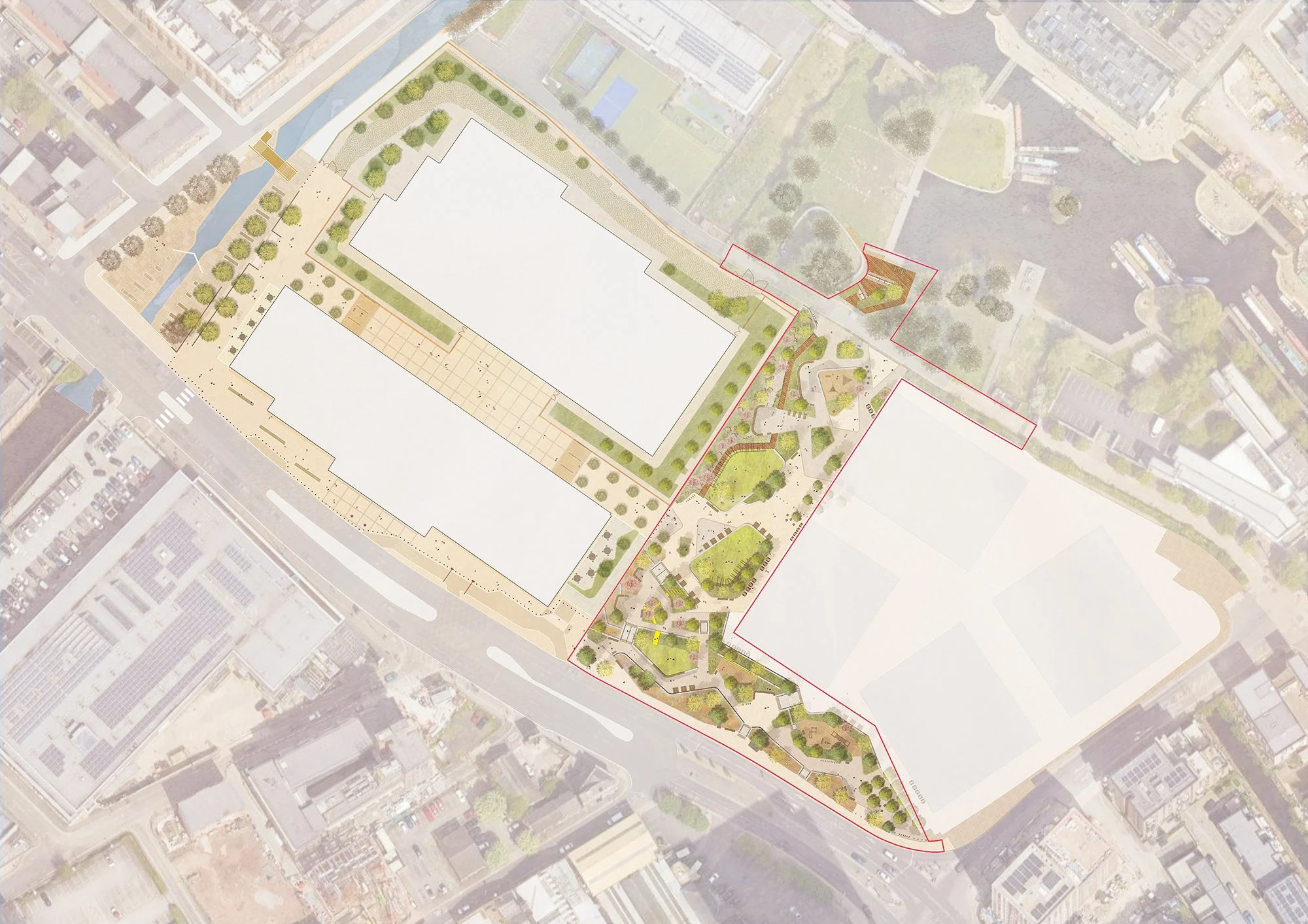A new park for the former Central Retail Park
A new 2.25 acre park and the main driver of a high profile city centre regeneration site, bringing new open space, ecological and socio-economic benefits to the community.
Visualisation of new park at Central Retail Park. ©Planit
For: Manchester City Council
With: Planit Landscape Architects
What is it: A new 2.25 acre public park and the key driver in the regeneration of an important brownfield site in the city centre.
Local Planning Authority: Manchester City Council
What we did: As part of a three-phase redevelopment project, we led on planning negotiations for the new park, liaising with the development team that was concurrently progressing the adjacent scheme.
We built a clear case for the scheme, demonstrating compliance with the adopted Strategic Regeneration Framework and coordinated the preparation of a full Environmental Impact Assessment (EIA).
Landscape masterplan of new park © Planit
The challenge
The scheme forms the central parcel of land between two commercial plots – one to be occupied by the Government Property Agency, with the other occupier not yet confirmed.
As a high profile site with a high profile occupier, the phasing of the two development proposals was important to get right.
We worked closely with the GPA site’s development team, and with the Council’s regeneration and planning officers, to ensure our client’s proposal – as the central piece of public realm in the wider scheme – aligned with and made the right connections to the adjacent plots.
Managing the preparation of an EIA is always complex. But when two adjacent schemes are coming forward at the same time, it requires another level of coordination, management and attention to detail, to make sure all the possible scenarios and impacts are properly assessed.
The solution
We engaged from the outset with the Council in both its capacity as developer and as decision maker. We kept a close track of all the EIA and planning regulatory requirements, being particularly mindful of the high profile nature of the site. And, we maintained an open dialogue with our counterparts doing the same thing for the adjacent GPA scheme.
That meant we were able to coordinate the timings of both applications, so that the city’s elected members had the full picture of what was proposed at the site when both schemes were presented for determination.
We also took a proactive approach to ensure the messaging at the public consultation for both schemes was clear, open and informative to help the existing communities of Ancoats and New Islington engage effectively.
The careful and proactive project management of the EIA process, within the wider planning application submission, ensured we secured a sound consent.
The benefits
The new park will be the key driver for ongoing positive change in Ancoats and New Islington.
It achieves the highest standards of sustainable design, creating a new city park with its own distinct appeal. It will promote recreational activities that support health and wellbeing, and provide for everyone – the old, the young and, by exceeding accessibility standards, those with mobility challenges.
The scheme will open up the site, establishing pedestrian connections between Great Ancoats Road, the existing Cotton Field Park and New Islington Marina and Rochdale Canal towpath. It will incorporate nearly 100 new trees, an inclusive, accessible garden, three play areas and age friendly seating.
The planning permission we secured has helped to unlocking this important regeneration site – a long term priority of the Council – enabling the significant inward investment that the GPA scheme represents to come forward.




